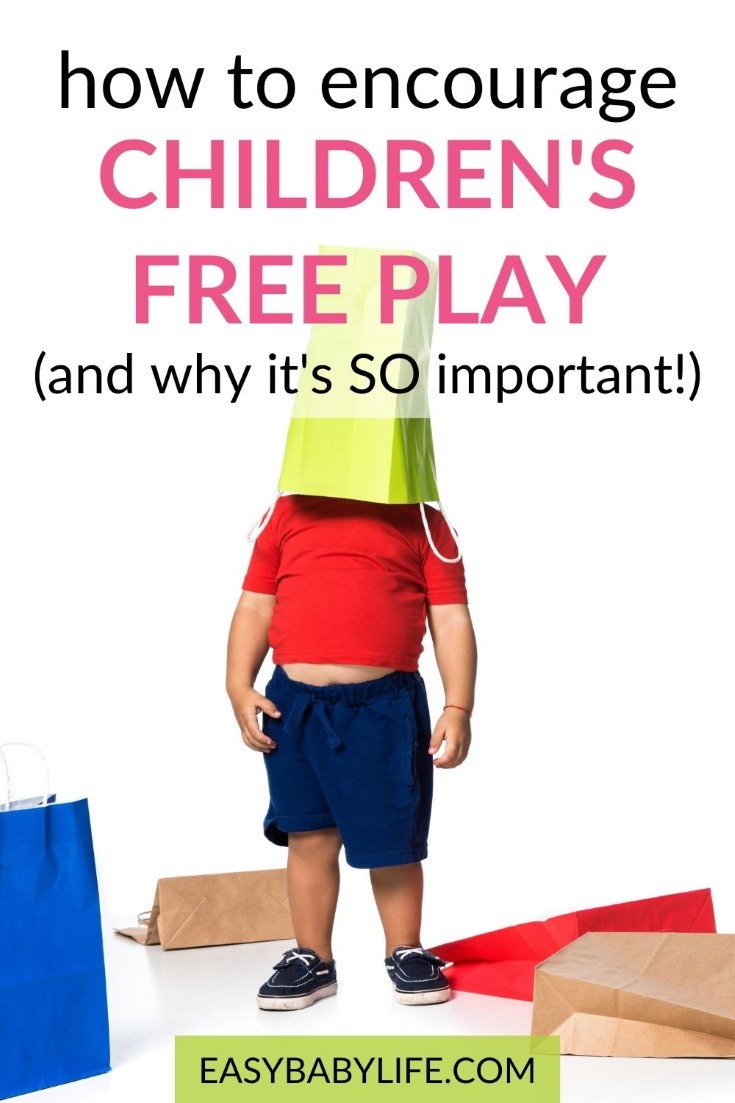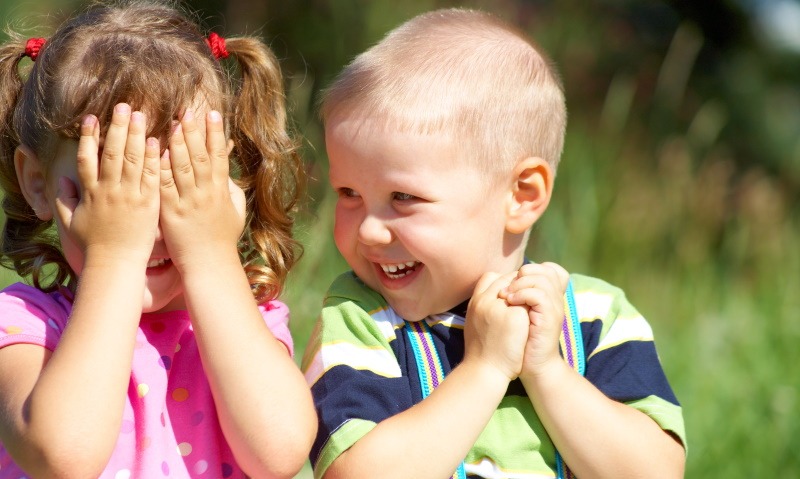In an era of chores and kids’ activities, learn why children’s free play is really important. We’ll go through the benefits of play and show you simple ways to encourage free play.

Bernard Suits: “Playing a game is a voluntary attempt to overcome unnecessary obstacles.”
Play, kids are not simply wasting time. There is an array of things that children learn in play and – that cannot be taught. They are learned through experience, and for children, experience comes from play.
For example, how to get along with other kids? This is probably the most important thing that anyone must learn; how to get along with peers. How do you in a social situation get your needs met while making sure that the other people involved are getting their needs met?
First, the word “play” is a word that we use in a lot of different ways. So, what does play mean to most researchers?
According to a child development specialist from the University of Notre Dame Australia, Tracy Treasure: “play is an activity that is defined by the confluence of four different characteristics”.
There are, in fact, many characteristics of play but today, we will focus on the four key characteristics of children’s play. We’ll also go through the benefits of play and, maybe most importantly – how to encourage free play for children.
In this article…
The Key Characteristics of Free Children’s Play
1. Self-chosen and self-directed
The first of these four characteristics is that it is self-chosen and self-directed, and I emphasize that because, while we may talk about our kids playing ballet or soccer, even if it is a self-chosen activity, it is not self-directed. Therefore, adult-directed activities are not considered play.
- Self-chosen and self-directed
- Does not include adult-directed activities
- Choosing and directing play themselves
Simply put, play is the activity that children choose for themselves and direct themselves. It is how children learn to create their own activities and how children learn to direct their own activities.
2. Intrinsically motivating
The second characteristic of play is that it is intrinsically reinforcing; it is intrinsically motivating. You are doing it just because you want to do it. You are not doing it to get a trophy, you are not doing it to get praise from your parents or a teacher, nor are you doing it for grades.
- Intrinsically motivating
- Not driven by an award’s
- Doing it because YOU want to do it
- Develops self-interest and passion
You are just doing it because you want to do it; play is its own reward. And play is how children explore and learn what they like to do. It is how they develop their passions, their interest, and those who are lucky enough may later pursue careers in what they enjoy doing as children in play.
3. Always structured
The third characteristic of free play, which may seem a little counterintuitive to many people, is that play is always structured. It is always structured by the child or the children themselves. Play is not a random act; it is freely chosen but not a random activity.
- Always structured by the child or children
- Not a random act
- Following socially agreed-upon rules
Children entering play are putting themselves into a defined activity that they have in mind, and they are structuring their behavior in accordance with a set of rules which may be implicit or may be explicit.
So, play, the structure of the play, and the creation of rules about play are how children learn to create and abide by socially agreed-upon rules.
4. Imagination
The fourth characteristic of children’s free play is that there is always an element of imagination.
Some play is more imaginative than others, but all involve stepping out of the real world. You immerse yourself into this pretend world. If you are little children pretending to be goblins or mermaids, you are pretending to be somebody you normally are not, and you are following that role.
- Always imaginative
- Pretending to be who or whatever you want to be
- Involves other children
- No need for elaborate toys – Just the good old outdoors
The most important material for play is other kids. There is an assumption that kids are naturally attracted to the great outdoors, but that is a cultivated interest.
Kids are naturally attracted to other kids, and the most important stimulant for play is other kids to play with; if there is something there, they will find something.
You do not have to have elaborate toys; you just must have space and opportunity.
Depending on the child’s age, they might be playing more or less together.
Babies and young toddlers are more likely to play alone or next to each other, while older toddlers and preschool children tend to cooperate in their play more and more.
But even if young children and toddlers often do play alone, they most often enjoy playing near other children and look with curiosity at what others do.
It also makes children happy, you know, as an incidental side benefit.
(For tips on how to encourage free play for your children, scroll below!)
The Benefits of Play
So, why is play important?
Years of research have shown in a definitive manner that child-led play supports the child’s growth and development.
Children’s play enhances the kid’s cognitive, psychological, emotional, and physical abilities, helps the child excel in school, and is a crucial and essential part of every child’s life.
Play provides children with a lifelong skillset that can only really be taught from play. For example:
- Learning to figure things out for themselves.
- Learning how to take healthy risks.
- Discovering new ways to explore their world and how it works based on their own self-led, intrinsically motivated interests.
- Practice important life skills, such as overcoming challenges, solving imaginative problems (either on their own or with other children), expressing their feelings effectively with others, and interacting with others who may have different points of view.
- Experience the joy of self-discovery, the excitement of being able to try their own innovative ideas without the fear of failure that normally occurs when there is a predetermined way to be “right” or “win.”
So, parents, please, allow your children to play because it is through the simple act of play children learn what no one else can teach them.
How to Encourage Free Play

We interviewed leading Early child development specialist Dr. Michelle Turner, University of Southern Queensland, to find out what her greatest tips were for encouraging free play for children.
Here is what she has to say:
- Outside space – whether it is your own backyard, a playground, or the beach, children are natural self-motivators when given the correct tools. So long as there is something there – a stick, a tree, birds; children will always find a way to play.
- Other children – Other children make for great companions and are naturally driven by the same desire for play.
- Boredom – It is natural for parents to want to help come up with ways to help their child fight off boredom, but actually, allowing your children to feel bored also encourages them to use their imagination and creativity more.
- Give them space and allow them to make “mistakes” – Sometimes, as parents, we find it hard to let our children make the mistakes, we know they are about to make, i.e. watching a child struggle with keeping a sandcastle together because they didn’t use enough water. Instead of intervening and coming to their rescue, leave them to make the mistake and learn from it. Allow them to use their imagination to find new and creative ways to solve the problem.
- Limit the number of gadgets and toys – The humble stick can bring as much joy to a child as any fancy $900 gadget can. A child can turn a stick into a sword, a magical wand granting their biggest wishes. Keeping the number of gadgets and toys down allows for children to explore their environment more and take advantage of what is already present.
- Provide seemingly random useless objects – You may be surprised by children who are wonderful inventors. Throw them into a room with a couple of bottle tops and cardboard, and just watch their creations come to life! (Always keep in mind age-appropriate items)
In addition to Michelle Turner’s excellent tips to encourage free play, I think I would like to add to limit passive screen time when your child simply watches something without playing and interacting.
Toys to Stimulate Free Play
- Anything from nature – and do let your children discover their own treasures!
- Building blocks, such as Duplo or Magnet Tiles
- Open up your wardrobe for fun dress-up games (never mind the mess!)
- Playdough or kinetic sand for sensory-free play inside
So, to conclude, allowing and encouraging children’s play is something we really should strive for. Children that play freely will learn many important life skills, such as cooperation, overcoming challenges, expressing themselves, using their creativity, and solving problems.
And all this while having fun! Not too bad! :-)
Even if chores have their place, too, as well s adult-led activities (such as the fun activities in this summer bucket list for toddlers that I just found), allowing plenty of time for child-led play and fun is at least as important!
Read Next
- Toddler Development Milestones, Red Flags, Fun Activity Tips
- Help, My Toddler Won’t Play With Other Children!?
- Find many more articles about parenting toddlers in a positive way here!
References
- Anning, A. & Edwards, A. (2006). Promoting Children’s Learning from Birth to Five Years: Developing the New Early Years Professional. Maidenhead: Open University Press.
- Dr. M, Turner. Personal communications, September 7, 2020.
- Howard, J. & McInnes, K. (2013). The Essence of Play: A Practice Companion for Professionals working with Children and Young People. 1st Edition.
- Barnett, L. A. (2007). The nature of playfulness in young adults. Personality and Individual Differences, 43: 949-958.
- The Importance of Play in Promoting Healthy Child Development and Maintaining Strong Parent-Child Bonds
What do you do to encourage play? And what do your children prefer to do when playing? Share and inspire other moms! :-)

Paula Dennholt founded Easy Baby Life in 2006 and has been a passionate parenting and pregnancy writer since then. Her parenting approach and writing are based on studies in cognitive-behavioral models and therapy for children and her experience as a mother and stepmother. Life as a parent has convinced her of how crucial it is to put relationships before rules. She strongly believes in positive parenting and a science-based approach.
Paula cooperates with a team of pediatricians who assist in reviewing and writing articles.






